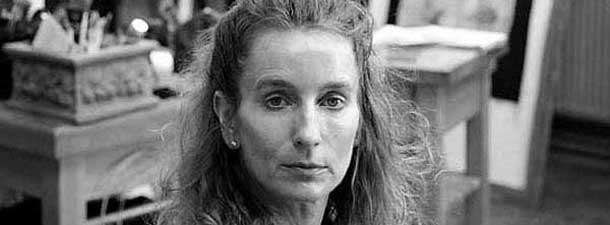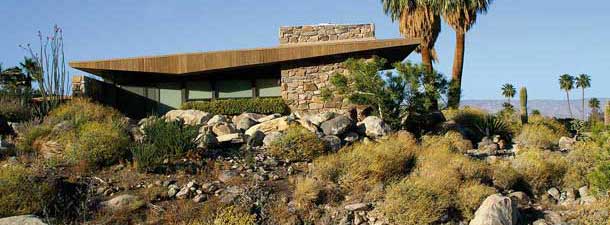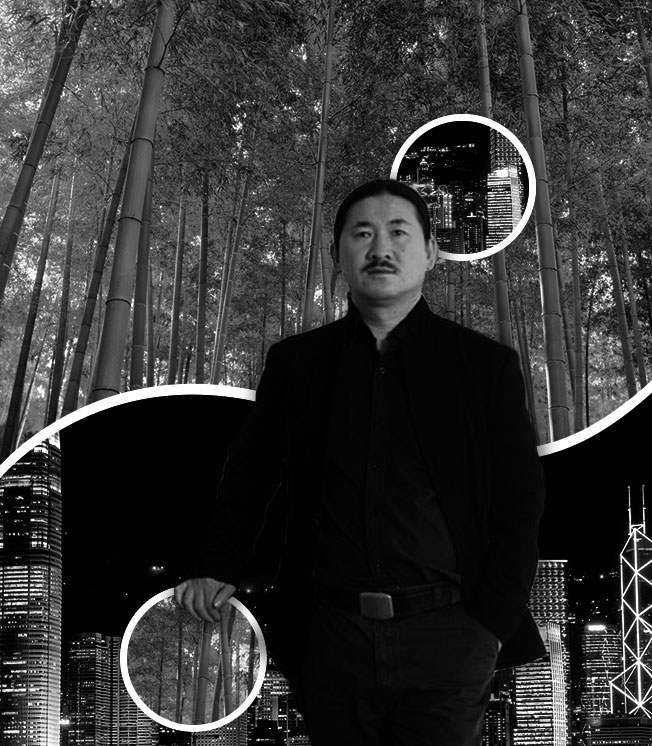
The Alchemy of Emma Sergeant
May 26, 2012
Mission statement by the editors
May 27, 2012Developed in the mid-20th century in the playground of the rich and famous, Desert Modernism is experiencing a resurgence of interest. Its sleek, clean angularity and fusion of the natural with the architectural make it a foil of sorts for the complexity and confusion of modern life.
H
High on a hillside above Palm Springs, a strange ritual is being played out. Amongst the giant pink boulders, spiky agaves and pungent creosote bushes, fifty or so architecture aficionados wearing baby blue protective bootees stand patiently in a queue. Many have flown in from the bitter North American East Coast winter and are squinting in the fierce Californian sunshine. A hushed sense of reverence hangs in the air, intensified by the distant warbling of mysterious desert birds. The object of this almost religious-seeming pilgrimage is the Edris House, which has opened its doors for Palm Springs Modernism Week. The streamlined house is a classic example of Desert Modernism, designed by the acclaimed Palm Springs architect E. Stewart Williams in 1954. The gently tilting roof juts out into the surreal desert landscape and seems to float effortlessly on expansive glass windows. Inside, the rich wood panelling and rough stone walls infuse a surprisingly homely ambience to the open-plan living spaces. This is modern architecture at its most appealing.

Edris House
In the living room a group of visitors crowds around the current owner, J.P. Roberts, and hangs on his every word. Roberts describes the slender steel pillars which are cleverly hidden within the window frames and which support the free standing roof, allowing for dramatic floor-to-ceiling glass walls.
“It’s a nightmare when the wind picks up”, he complains, describing the scary creaking and rattling of the earthquake-proof structure.
By the looks on their admiring faces the visitors could put up with this minor design hiccough if they were lucky enough to live here.
A husband and wife from Chicago gaze wistfully out into the garden where a swimming pool looks out over the shimmering Coachella Valley, flanked by the snow-dusted San Jacinto Mountains.
“I’d rather sit by the pool and watch the snow on the mountains than shovel it out of my front yard back home”, the husband quips to his wife.

Swiss Miss style home
Like most visitors to Palm Springs, the Chicago couple had fallen in love with the Coachella Valley’s sublime winter microclimate. This was one of the key ingredients in the development of Desert Modernism. In the 1920s, Hollywood’s silver screen legends discovered Palm Springs subtropical charms, and it quickly become one of the most fashionable watering holes in the US. During the ensuing building boom, the perennially popular Spanish colonial style was adopted and even today parts of downtown Palm Springs resemble the quiet backwaters of Oaxaca.
However, a new generation of architects, inspired by the European Bauhaus and De Stijl movements, were rapidly coming up through the ranks of American architecture and in Palm Springs they found both the money and inspiration to develop their style. By the 1930s, Palm Springs had become Hollywood’s playground and the casual outdoor lifestyle lent itself perfectly to the angular simplicity, open plan and seamless fusion of indoor and outdoor living spaces that became the hallmarks of Desert Modernism.

Swiss Miss Architecture
From the 1940s to the 1960s the style reached a peak of creativity as Hollywood stars and business moguls commissioned architects to design the ultimate in sleek contemporary living. As the 1950s progressed, the newly affluent middle classes wanted a slice of this hedonistic Californian lifestyle and pared-down versions of these millionaire dream homes were built in their thousands throughout the US. Today, Desert Modernism conjures up all the optimism of post-war America, and in a country wracked by self doubt, Americans can’t get enough of this nostalgic feel-good factor.

Desert Modernist home
Twin Palms Estate 1957-1959
The new-found interest in Desert Modernism can be seen everywhere in Palm Springs, from the martini pool parties hosted in hip new hotels to the curvaceous 1950s furniture on display in North Canyon Drive’s fabulous interior design boutiques. However, for true architecture connoisseurs, the best time of year to explore Palm Springs’ unrivalled collection of Desert Modernism architecture is during Modernism Week, a 10-day festival held each February that celebrates all aspects of modern architecture and interior design. Palm Springs is a town bursting with civic pride, and during the festival, private homeowners, the Palm Springs Art Museum and myriad heritage organizations come together to showcase the best of Desert Modernism. Eighty volunteers in bright orange T-shirts help coordinate events. When remote, iconic homes such as the Edris House are open to the public, they offer a welcome beacon to visitors getting lost crawling around the suburbs in their convertibles.
The Edris House is located in Little Tuscany, one of Palm Springs’ most rewarding neighborhoods for discovering mid-century modernist masterpieces. A building that is instantly recognisable from coffee table architecture books is the Kaufmann House, designed by the Austrian-born architect Richard Neutra in 1946. Edgar Kaufmann, a department store tycoon from Pittsburgh, had a deep interest in modern architecture and was a great lover of the outdoors. In the 1930s he commissioned the grand old man of modern American architecture, Frank Lloyd Wright, to build a country retreat in Fallingwater near Pittsburgh. The resulting structure of stark concrete slabs tumbling down a waterfall is now one of America’s best loved National Historic Landmarks. But for his new Palm Springs residence, Kaufmann wanted something altogether lighter – a retreat where he could feel at one with the beautiful desert terrain. In Neutra he found the ideal man to visualise his dream home. In one of his essays the architect wrote:
“Our organic well-being is dependent on a wholesome, salubrious environment. Therefore exacting attention has to be paid to our intricate, sensory world.”
The Kaufmann House seems literally to hover over the desert floor. Ashlar curtain walls and a vertical chimney seem to morph out of the boulder-strewn landscape while sliding glass reinforced by aluminum fins allows the desert sunshine to flood into the open-plan rooms.

Kauffman House

Kaufmann House
From certain angles, the Kaufmann House resembles a ship gliding on the hillside, but further along the Palm Canyon Valley, the iconic Frey House II seems to disappear completely into the mountainside. The Swiss-born architect Albert Frey is perhaps the most revered of all the Desert Modernist architects. In 1928, the young Frey worked briefly at Le Corbusier’s practice in Paris and became lifelong friends of this great pioneer of modern architecture. Later in the year he moved to the United States and worked on such seminal projects as the Museum of Modern Art in New York. Frey first Visited Palm Springs in 1934 and was immediately spellbound by the desert’s beauty. He moved here permanently in 1939. In the post war building boom he designed many of Palm Springs best-loved buildings, ranging from hospitals to churches. However it was the humble Tramway Gas Station just outside the town that became Frey’s most celebrated landmark. Now the Palm Springs Visitors Centre, its soaring parabolic canopy framed by desert palms is one of the essential photo stops for anybody making a road trip around California.

Tramway Gay Station

Frey II interior
When it came to designing his own home in 1963, Frey chose a secluded spot on the mountainside and spent a whole year studying the sun’s seasonal trajectory to ensure that the roof overhang allowed maximum sunlight in the winter whilst keeping the house cool in the summer. The entire structure is built around a giant natural boulder which acts as a dramatic counterfoil to the simple glass, steel, and aluminium frame. Inside, the surfaces and furnishings reflect the colours of the surrounding desert. Polished concrete floors are tinted rose brown to echo the hues of the nearby rocks. Bright yellow curtains match the daisy-like flowers of brittlebush shrubs, while the Formica tables and cabinets are an intense Californian sky blue. One of the most endearing features is a hollowed out stone by the swimming pool which Frey would fill with water and watch lizards come to drink. The effect of this house is almost atavistic in nature, and this is the key element in the resurgence of Desert Modernism. In an increasingly complicated world, Desert Modernism reconnects modern living with light and landscape, and the result is timelessly beautiful architecture.

Frey House
[note]
The 8th Palm Springs Desert Modernism Festival takes place from February 14-24, 2013. Visit www.modernismweek.com for more information.
[/note]




